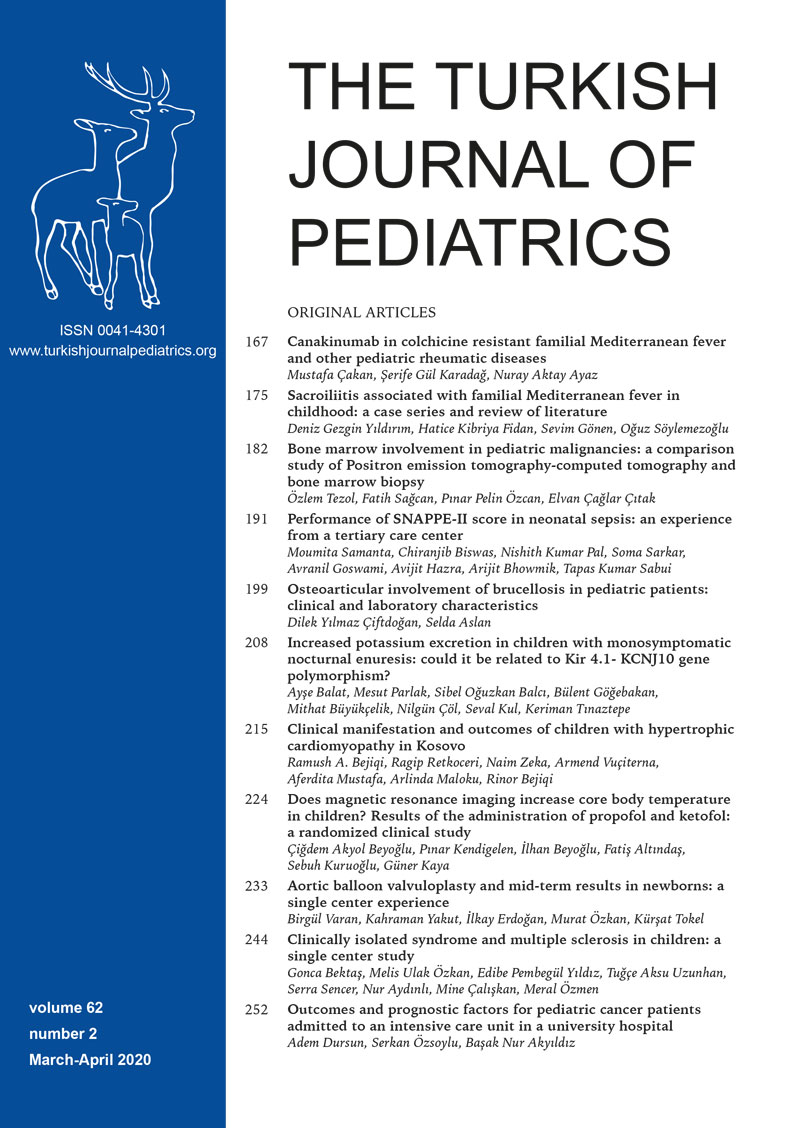Abstract
Background and Objectives. The aim of this study was to evaluate the clinical and laboratory characteristics of osteoarticular involvement in children with brucellosis.
Methods. A total of 202 pediatric brucellosis patients were evaluated from April 2012 to August 2013.
Results. Among the 202 patients, 53 (26.2%) had osteoarticular involvement. In patients with osteoarticular involvement, the mean values of estimated sedimentation rate (ESR) and C-reactive protein (C-RP) were significantly higher than in patients without osteoarticular involvement (p = 0.001, p = 0.01, respectively). The majority of patients with osteoarticular involvement (n = 48, 90.6%) had a higher standard tube agglutination (STA) test titer (≥ 1/640) than patients without osteoarticular involvement (n = 69, 46.3%) (p = 0.001). The most commonly found osteoarticular involvement was peripheral arthritis. The second most commonly found osteoarticular involvement was sacroiliitis (n = 5, 9.4%). Three patients (5.7%) had spondylitis. Only one patient (1.9%) had osteomyelitis.
Conclusions. Osteoarticular involvement was detected in nearly one of every four childhood brucellosis patients in our study. Brucellosis should be considered as a pre-diagnosis in children with osteoarticular complaints, especially in regions where the disease is endemic.
Keywords: Brucellosis, osteoarticular, pediatric
Copyright and license
Copyright © 2020 The Author(s). This is an open access article distributed under the Creative Commons Attribution License (CC BY), which permits unrestricted use, distribution, and reproduction in any medium or format, provided the original work is properly cited.














